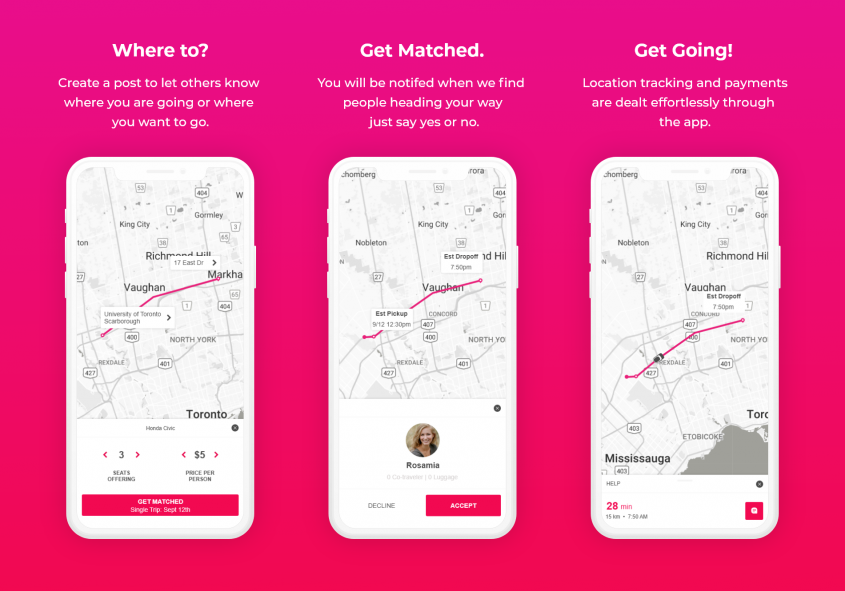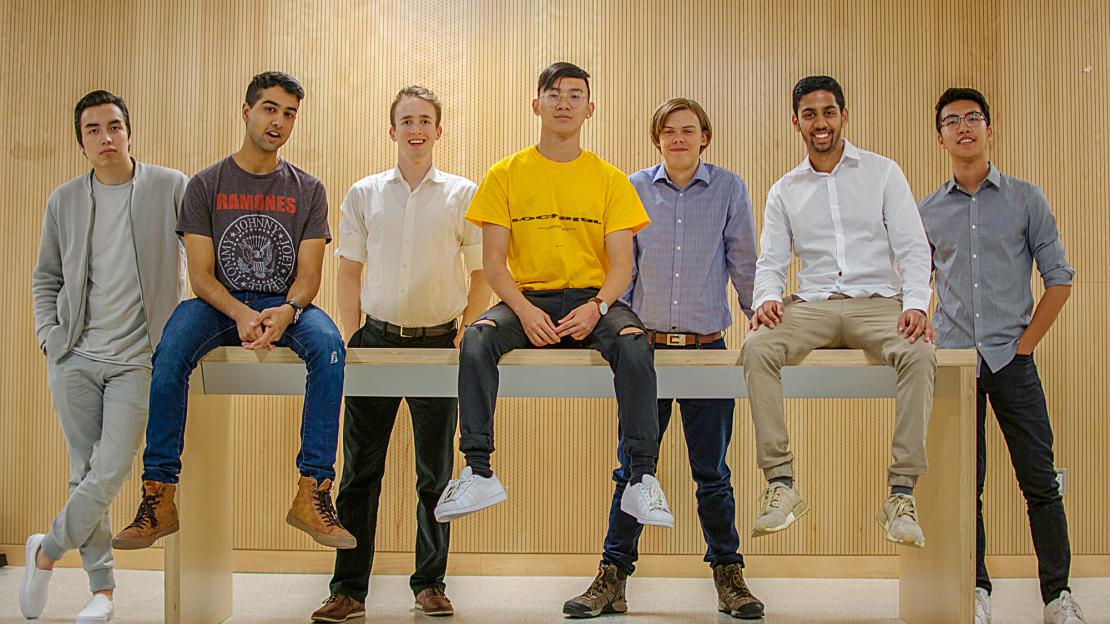During his first year at U of T Scarborough, Peter Meng regularly spent $40 on gas driving to visit his girlfriend in Waterloo.
Frustrated, he discovered a network of Facebook groups where thousands of university students coordinate carpooling.
“My immediate question was, ‘Why isn’t there anything that specializes in doing this?’” Meng says. “I realized there are platforms like this, but they don’t actually take away the pain of carpooling.”
The actual pain, he says, is three-pronged. Co-ordinating carpooling is tedious, there is a limited number of people starting and ending at the same location, and there are too many drivers with no incentive to become riders.
So last summer Meng began developing Weav, an app to take the pain out of carpooling.
He soon entered The Hub, U of T Scarborough’s entrepreneurial incubator, where he connected with six other U of T Scarborough students and worked with director Gray Graffam to bring Weav to life.
“I think that they can actually hit this out of the park. They have something that can provide a wonderful service for people,” Graffam says. “I think they’re sitting on something that will take off.”
The Hub is part of a community of nine entrepreneurial incubators across all U of T campuses. Meng’s team spent this summer developing a unique algorithm in the Hatchery, an incubator with an engineering focus at U of T St. George, before returning to The Hub.

The algorithm is embodied in their slogan, “Get matched, get going.” Users open the app, input their destination, then continue with their day. The app sends an update when a match is made. Users can view information on the driver or rider and accept or decline the ride with a tap.
“There’s really a beauty in the simplicity of the algorithm,” says Sean van Wyk, a third-year student in computer science and Weav’s project manager. “The matching process is really the core of the app.”
Matches are not dependent on the same start or end location —the app calculates when riders are on a driver’s route. If there are too many drivers making the same route, the app encourages drivers to instead become riders.
“Our vision for the GTA would be to fill every empty seat on the road,” says Brady Vallbacka, a fourth-year student in management and IT, who is Weav’s marketing operations specialist. “If we could do that, we could solve a lot of traffic problems in Toronto.”
Weav uses location tracking, then sends payment through the app once riders and drivers reach their destination. Drivers only charge enough to cover expenses, like gas and insurance. Drivers can set their own rate if they have greater costs, like a car that uses more gas.
The name Weav is, in part, a play on weaving through traffic. It also references sewing — a nod to the connections the team hopes to create between people. Imagine, van Wyk says, several people connected through Weav because they are going to the same hockey game.
“You might meet people with similar interests as you, people you can have a conversation with, people that you might just then hang out with,” he says. “It provides a lot of value and a lot of ways for people to actually connect.”
They hope to eventually use Facebook data to match people based on interests and other commonalities, like schools or programs.
While the team initially targeted long-distance journeys, they had an epiphany after Vallbacka was told that many co-op students will not commute to Mississauga from Scarborough, despite the wealth of placements.
“I guarantee there’s one student doing that commute every day and they probably have four empty seats,” he says. “If they could get connected easily, they’d have more job opportunities.”
Weav created a “scheduled commute” feature to help connect these students and other regular travellers. The team is working to release a prototype of the app by early next year.
“We want to create a solution,” Meng says. “Connecting people to people, connecting people to places, drivers to riders, and making it easier and cheaper.”
